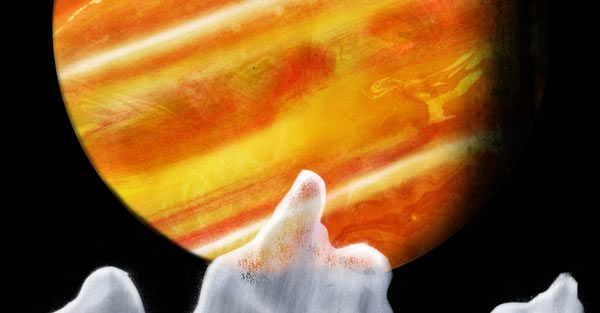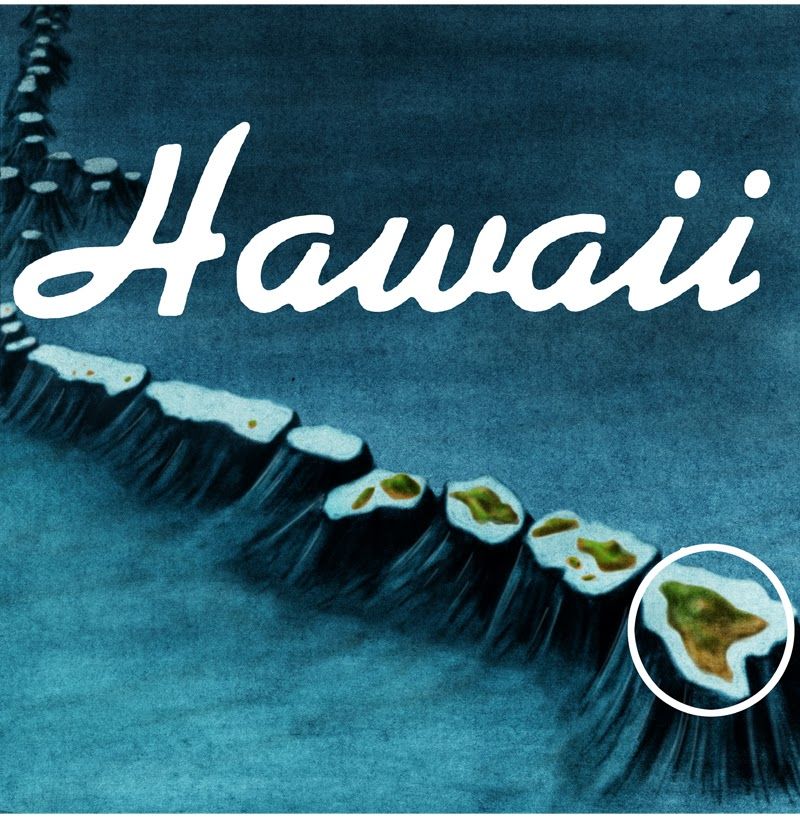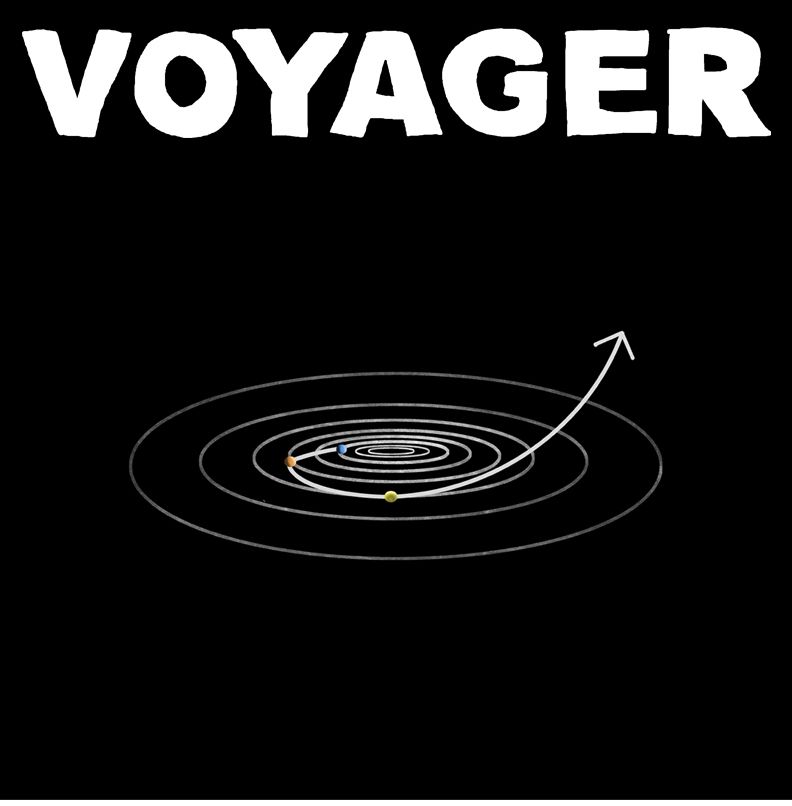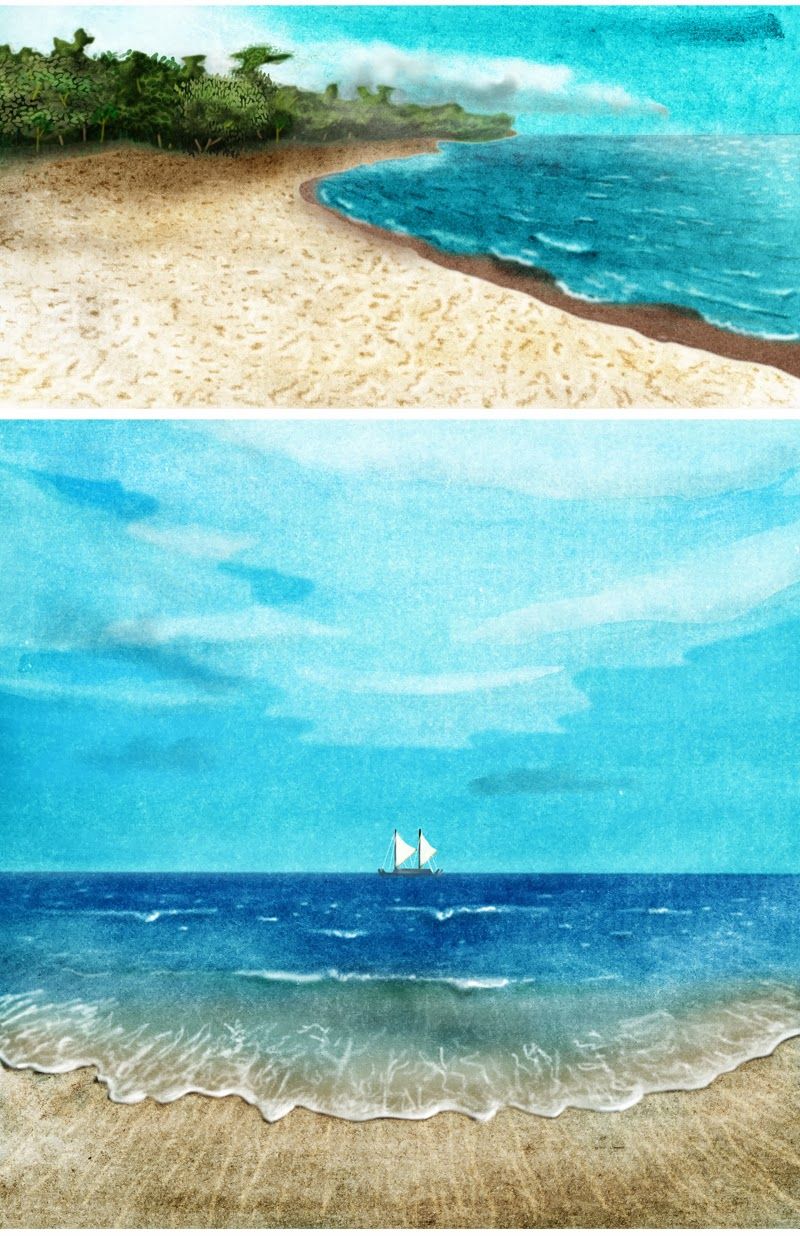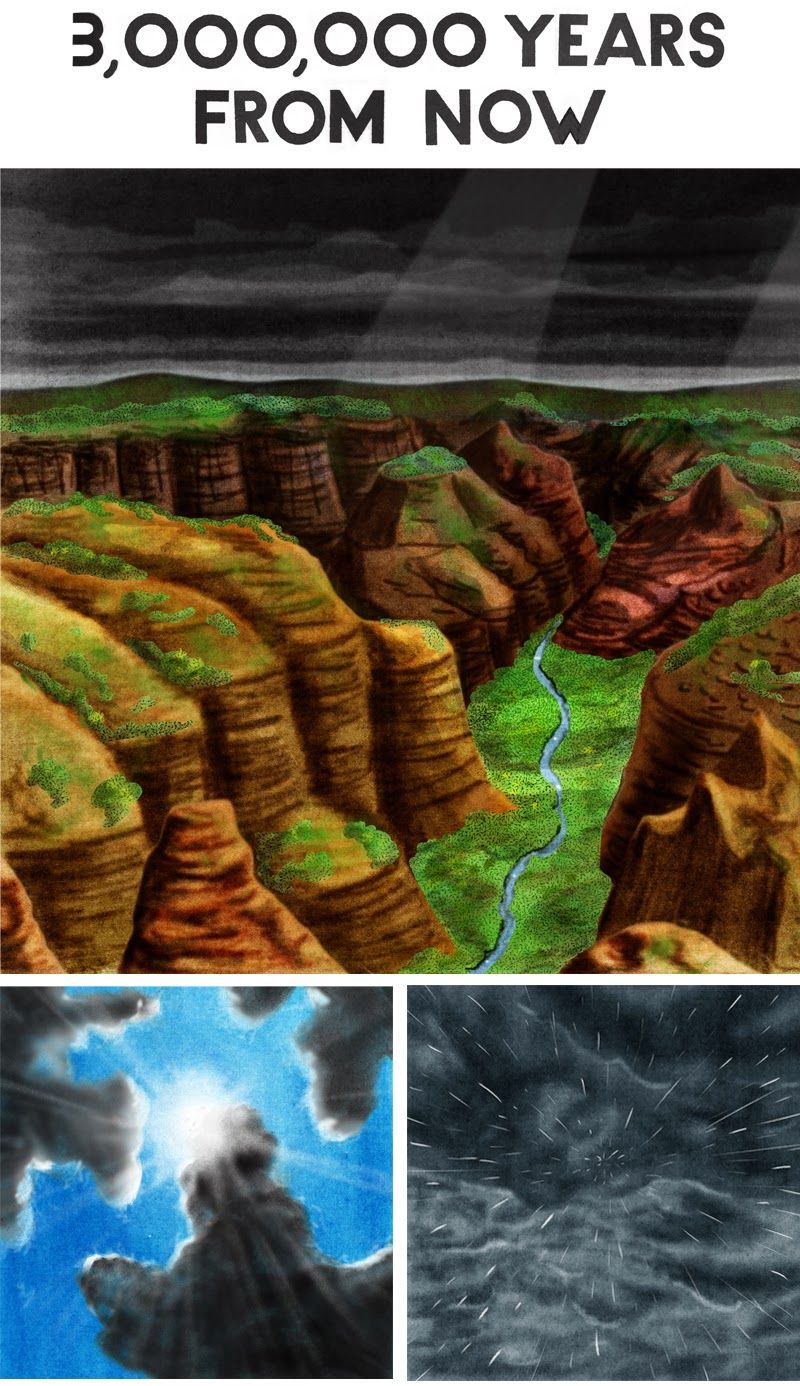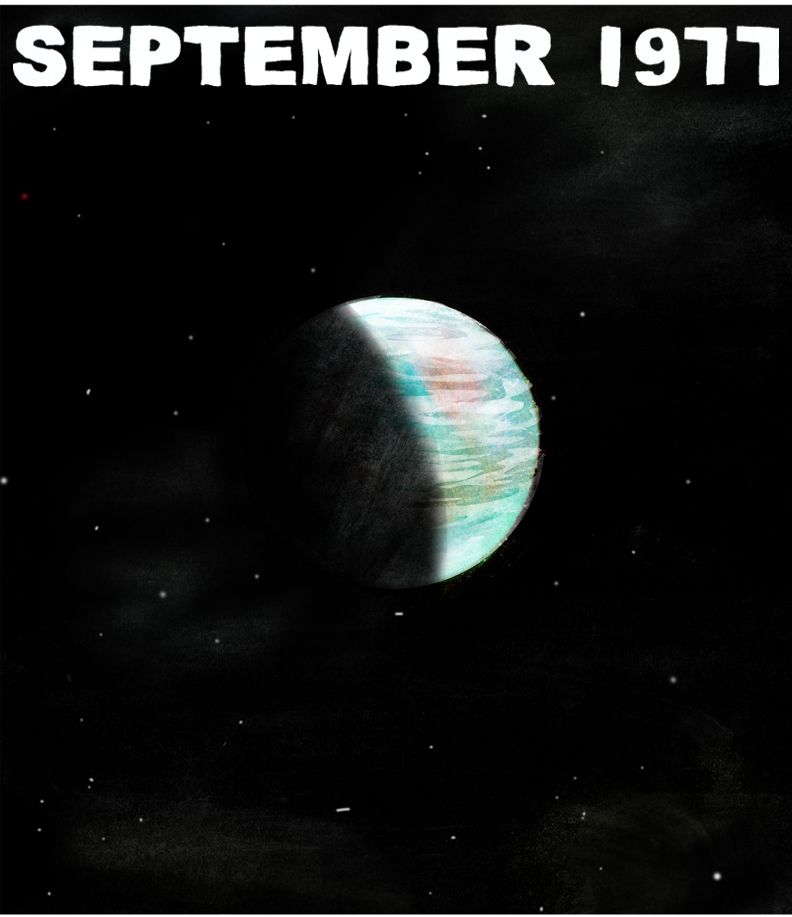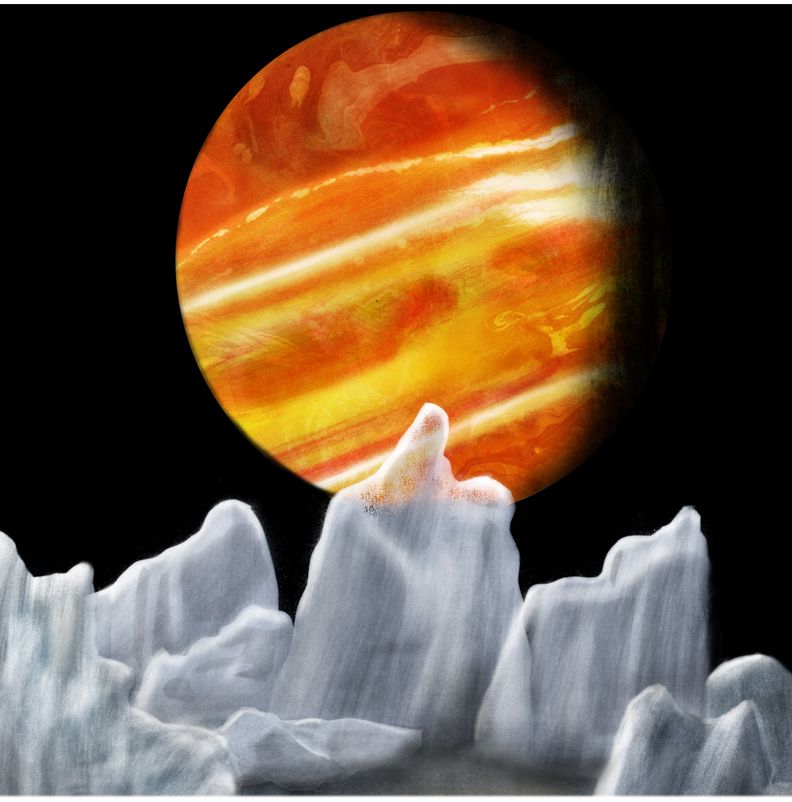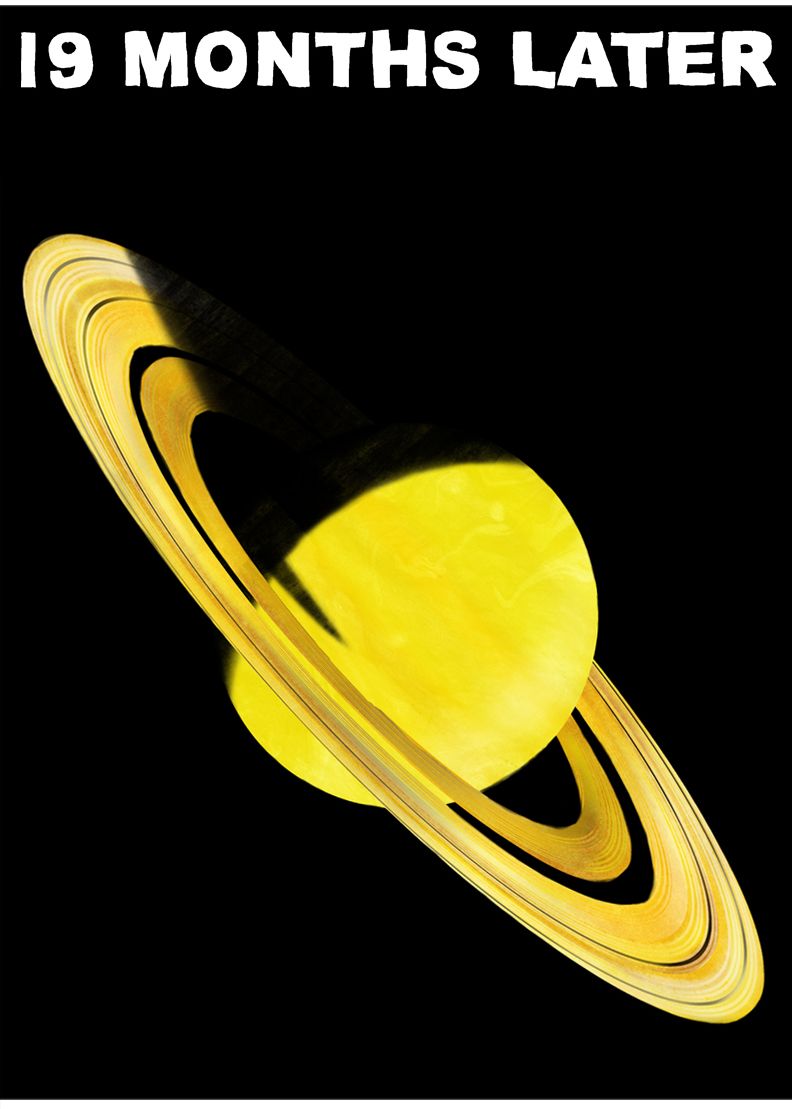Though he received a Xeric Grant for his book "Lone Pine" in 2010, Los Angeles-based cartoonist and animator Jed McGowan is perhaps best known for two comics he posted on his website last year. "Voyager" and "Hawaii" are both wordless comics. In beautiful color, the comics each construct a narrative out of unlikely stories -- the passage of the Voyager spacecraft through the solar system in the first and the lifespan of a volcanic island in the second.
McGowan spoke with CBR News about his work, how it's changed over time and what he's working on next.
CBR News: Just to start, I was wondering if you could talk a little about your background.
Jed McGowan: I was born and raised in southern California. I'm living in Los Angeles right now. For the most part I'm self-taught. I majored in English and didn't get much formal art training. After making several short comics, I got a self-publishing grant from the Xeric Foundation in 2010 for my first and only graphic novel "Lone Pine." The book is pretty different from what I do now -- it's a crime story drawn in two colors.
What did winning the Xeric grant mean to you?
I'm still a little sad they stopped giving out self-publishing grants. The grant was hugely important for me. It gave me free money to print "Lone Pine," obviously, but it also was an education. I worked with a local printer and tried to be as hands-on as possible. The printing process took over my life for a few months, but it was something I really enjoyed and hope to do again. I also worked with the publisher AdHouse Books to list "Lone Pine" in Previews and distribute it to comics shops. So the grant helped show me everything that goes into a comic beyond writing and drawing it. It was a lot of work and a lot of fun.
Where did the idea for "Voyager" come from?
I've always been interested in space and astronomy. A few years ago, I got a telescope and had my mind blown observing the rings of Saturn and the cloud bands of Jupiter. I also got really excited about NASA's Curiosity mission; I even threw a super nerdy party to watch the rover's landing on Mars. I was amazed at how many emotions I felt just watching a robotic rover, and I thought it would make a great main character for a story. I was also interested in pre-digital space art, work from the '50s through the'70s. I really admire artists like Chesley Bonestell. All of those things were percolating in my mind when I started "Voyager."
I'm curious about the approach of the comic and how it reads. Did you have that idea from the beginning or how did the idea develop?
I knew I didn't want humans in the comic, but I still wanted something that was emotional, with a clear beginning, middle and end. I thought Voyager's journey through the Solar System fit that structure pretty well. One thing I wasn't sure about was how much text would be in the comic. I played with wordier versions, but it never felt right. The images communicated enough on their own.
"Hawaii" has a similar approach. Do you think of it as a similar comic to "Voyager?"
Yeah, I definitely see "Voyager" and "Hawaii" as similar comics. I really enjoyed drawing the otherworldly landscapes in "Voyager," and I wanted to pursue that more in "Hawaii." I have family on Kauai, and on one of my trips there, I also went to the Big Island and Volcanoes National Park. My mind was blown again. I started researching the geology of Hawaii and saw another good story with a clear structure -- the birth, life and death of a volcanic island.
After "Voyager," when you started thinking about "Hawaii," did you know that the comic had to be wordless? What do you think is especially powerful about telling a story without words?
Yeah, I knew from the start that "Hawaii" would be nearly wordless. I felt it fit the kind of story I wanted to tell. In both "Voyager" and "Hawaii" I wanted to show the reader an unfamiliar, alien world -- even though we're still on Earth in "Hawaii." Adding lots of text would put a human perspective on everything and explain away some of that strangeness that I liked. I also thought text could make the comics too educational. I did a lot of research for both comics, and I think they can be educational, but my main goal was to make them fun and beautiful. Hopefully they work on multiple levels -- educationally and aesthetically.
You use color beautifully in both "Voyager" and "Hawaii." I'm curious about how you found the right palette and how you think about color.
Thanks! I love working with color. Choosing the right colors for an image is something I do intuitively. I use whatever feels right. I think I was also lucky that Jupiter, Saturn and volcanoes are already beautiful. I was just trying to capture some of that in my comics.
You said yourself that "Lone Pine" is completely different from what you do now -- how much of that shift was the result of just trying to think about comics differently, how much was experimentation and how much was just the result of working on a very different kind of story?
For whatever reason, I love to experiment with each new project. Whether it's telling a new kind of story or drawing in a new style, it's fun for me to try something different. I think part of what's motivating that is a fear of repeating myself in art.
That said, I think there are certain things that are common to many of my comics. Pacing, for instance. I like to let things unfold slowly. Now that I've said that, maybe my next comic will be super fast paced.
What's your science background? These are comics that require research, and yet the storytelling aspect is not how we often think about science.
I've been interested in science since I was a teen. I majored in physics before switching to English. These days, I just read a lot of science books, watch documentaries and learn from my brother, who has a PhD in neuroscience. He's definitely been an influence. Only relatively recently have I connected my interest in science with comics. I have many years' worth of drawings that have nothing to do with science. Now I use comics as a way to research and obsess over a topic, so I can learn about something that interests me and get a comic out of it in the process.
And yeah, a connection between science and storytelling may not seem obvious, but I do think there is one. Many geologists and biologists are constructing stories or sequences of events that help us understand the natural world. There's a long tradition of visual storytellers who deal with science, too. I mentioned Chesley Bonestell above, but I also love Charles R. Knight, who did amazing paintings of dinosaurs and prehistoric life, and Ernst Haeckel, who was both an artist and a scientist. They all worked with single images or illustrations -- sadly, we have no comics from them!
Are you working online or do you work on paper?
All of my drawings for these comics started on paper and got finished in the computer. Other than some marbling that I did for Jupiter and Saturn in "Voyager," it's all dry media -- charcoal and pastels. I use the computer for coloring and assembling different drawings in to a single image.
Why did you decide to post these comics online in their entirety as opposed to publishing them? And why did you choose to publish them all at once as opposed to serializing it one page at a time?
I was curious about how many readers I could reach online. It was kind of an experiment. I also wanted to focus on making an interesting comic and not on making a sellable or publishable comic. It took the pressure off and allowed me to try new things. I was tempted to serialize these comics -- it's hard to sit on pages for months as you work on a comic -- but I thought they would be much more powerful in their entirety.
What kind of response have you gotten to "Voyager" and "Hawaii?" Everyone I know who's read them have loved them, but I know it can be hard to get people to read longer comics online.
I've been really happy with the response. I made "Voyager" not knowing if anyone would read it or like it, and I deliberately tried not to think about that stuff or have it motivate or influence me. I just wanted to make a comic that I liked, so it was really nice to put it out there and get a positive reaction. I've been surprised by the different kinds of people that read and like the comics. It's not just comics people -- it's scientists, educators, kids, older people that never read comics. I think that's awesome.
Will we be seeing more print comics from you, or reprints of digital comics soon?
I would love to have another print comic at some point, and I think "Voyager" and "Hawaii" would work well in book form. I'm reluctant to print the comics myself though -- printing "Lone Pine" and getting it out in the world was exhausting. Right now, I don't want to take time away from making new comics.
What are you working on now?
I'm working on a third story that's in a similar style to "Voyager" and "Hawaii." If "Voyager" is about astronomy and "Hawaii" is about geology, this new one is about biology.
"Voyager" and "Hawaii" are available to read now, at jedmcgowan.com

